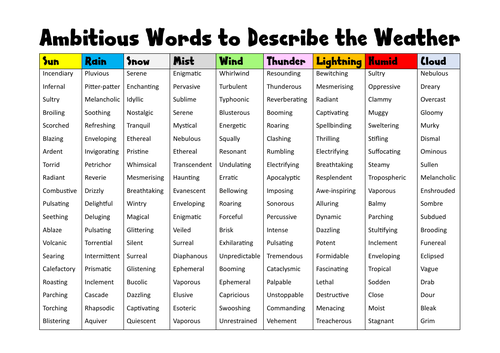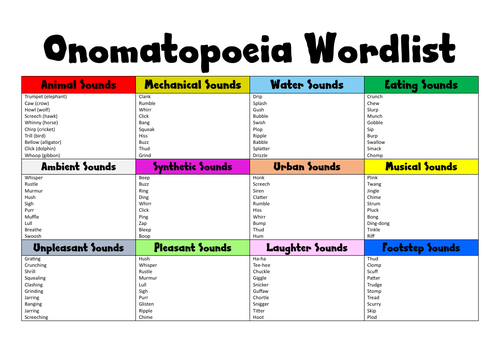423Uploads
104k+Views
58k+Downloads
English language arts

Identifying and commenting on semantic fields in Paper 1 Question 2
A lesson that teaches students how to identify and comment on the impact of semantic fields within the short extract in AQA Paper 1 Question 2 and Paper 2 Question 3.
Students will be familiar with zooming in to analyse the key word choices but they can make a more sophisticated point if they can discuss the combined effect of a range of words which are linked semantically.
This lesson gives students lots of opportunities to practice developing this skill using 6 different extracts.

Macbeth Plot Summary Cloze exercise
A simple cloze exercise for reinforcing knowledge of the basic plot to Macbeth. Answers are on page 2.

Poetic Techniques - Card Match Up Activity
Card match up activity for reinforcing knowledge of 10 poetic techniques. Cut out the coloured cards. Ask students to match the technique to the definition and the example.

Jekyll and Hyde Plot Summary Cloze Exercise
A straight-forward plot summary cloze exercise to reinforce knowledge of the plot to Jekyll and Hyde. Includes the answers on page 2.

Persuasive Techniques Card match up Activity
A card match up activity for reinforcing knowledge of persuasive techniques.
Cut out the coloured cards. Students then need to match the technique to the definition and the example.

Symbols in literature
Students study the list of 40 common symbols in literature alongside their common meanings.
They then move on to complete a multiple choice quiz based on matching the symbols to the meaning.
Ideal for introducing KS2 or KS3 students to the power of symbolism to help make their creative writing more sophisticated.

Similes Worksheets
Two multiple choice quizzes on similes.
Exercise 1 asks students to complete each simile by picking the most apt simile from a choice of 4.
Exercise 2 asks students to identify the feelings evoked by similes.

Identifying the impact of similes
A worksheet activity to help students become more confident with identiying the impact of similes. Each question starts with 'Which simile evokes a sense of …?. Students look at the 4 possible answers and pick the simile that best answers the question. There are 16 questions in total.
Answers are on page 2.

Colour connotations in literature
Students study the sheet of colours and their typical connotations in literature. They then move on to test their understanding by completing the 20 question multiple choice quiz. Answers are included.

Words to describe the weather
I created this word bank to support my students in their creative writing by providing them with some ambitious words to help describe different weather settings in a sophisticated way. I hope you also find this useful.

Onomatopoeia Wordlist
Students often use cliched onomatopoeic sounds in their creative writing, so I have created this list to help offer students more choice in their use of onomatopoeia.

The Map - Woman Revision Sheet Feminine Gospels
A revision sheet containing detailed analysis of 10 significant quotations in this key poem from The Feminine Gospels collection by Carol Ann Duffy.

The Long Queen Revision Sheet Feminine Gospels
A handy revision sheet for the opening poem from The Feminine Gospels collection. It contains detailed analysis of 10 key quotations from The Long Queen.

The Diet Revision Sheet Feminine Gospels
A handy printable revision sheet for this key poem from the Feminine Gospels collection. It improves an overview of the poem and detailed analysis of 10 key quotations from The Diet.

'Because, But, So' Paragraphs for GCSE English literature
If you want your students to write better exam responses which demonstrates more depth to their thinking, you should consider using the ‘because, but, so’ method from the writing revolution.
This resource collates a wide range of exemplar ‘because, but, so’ paragraphs on the most popular GCSE English literature texts for AQA;
Macbeth
A Christmas Carol
Romeo and Juliet
An Inspector Calls
Lord of the Flies.
After studying the wide range of models, students should gain the ability to write their own ‘because, but, so’ paragraphs in the same style.

AQA Paper 1 Question 2 Moving from Level 3 to Level 4
Many students struggle to get into the top band (level 4) for AQA Paper 1 Question 2. This resource is aimed at helping students move from level 3 to level 4. Students look at and compare level 3 and level 4 sample responses to 6 different Paper 1 Question 2 short extracts. For each, they must attempt to explain in their own words why the level 4 response is better than the level 3 response.

War Photographer Carole Satyamurti
Revision activity/revision sheet containing 10 analytical questions on the poem with 10 high level developed responses to the questions. Created for a revision booklet on the Edexcel Conflict anthology.
Also contains a model response comparing how powerful images are presented in War Photographer and What were they like?

Compare how anger presented in A Poison Tree and one other poem (Edexcel conflict poetry)
2 model answers to the Edexcel conflict poetry exam style question:
Compare how anger is presented in A Poison Tree and one other poem.
Essay 1 uses Exposure
Essay 2 uses Half Caste

Catrin
Handy revision sheet on Catrin for the Edexcel poetry anthology contains a question sheet 10 exploratory questions about the poem and an answer sheet with thoughtful and perceptive answers to the analytical questions.
Also contains a model exam response comparing how tension is presented in Catrin and The Class Game.

Animal Farm - Tracing characters and themes
2 page Animal Farm revision worksheet.
Page 1 has 3 key quotations for each of the main characters and themes which have been carefully selected from roughly the start, the middle and end of the novella for students to comment on and analyse to help them show knowledge of the whole text.
On page 2 there is then a writing frame to guide students on how to write these plans up as 3 paragraph responses covering the whole text.
This resource has been successful at supporting students looking to achieve grades 4-6.




















